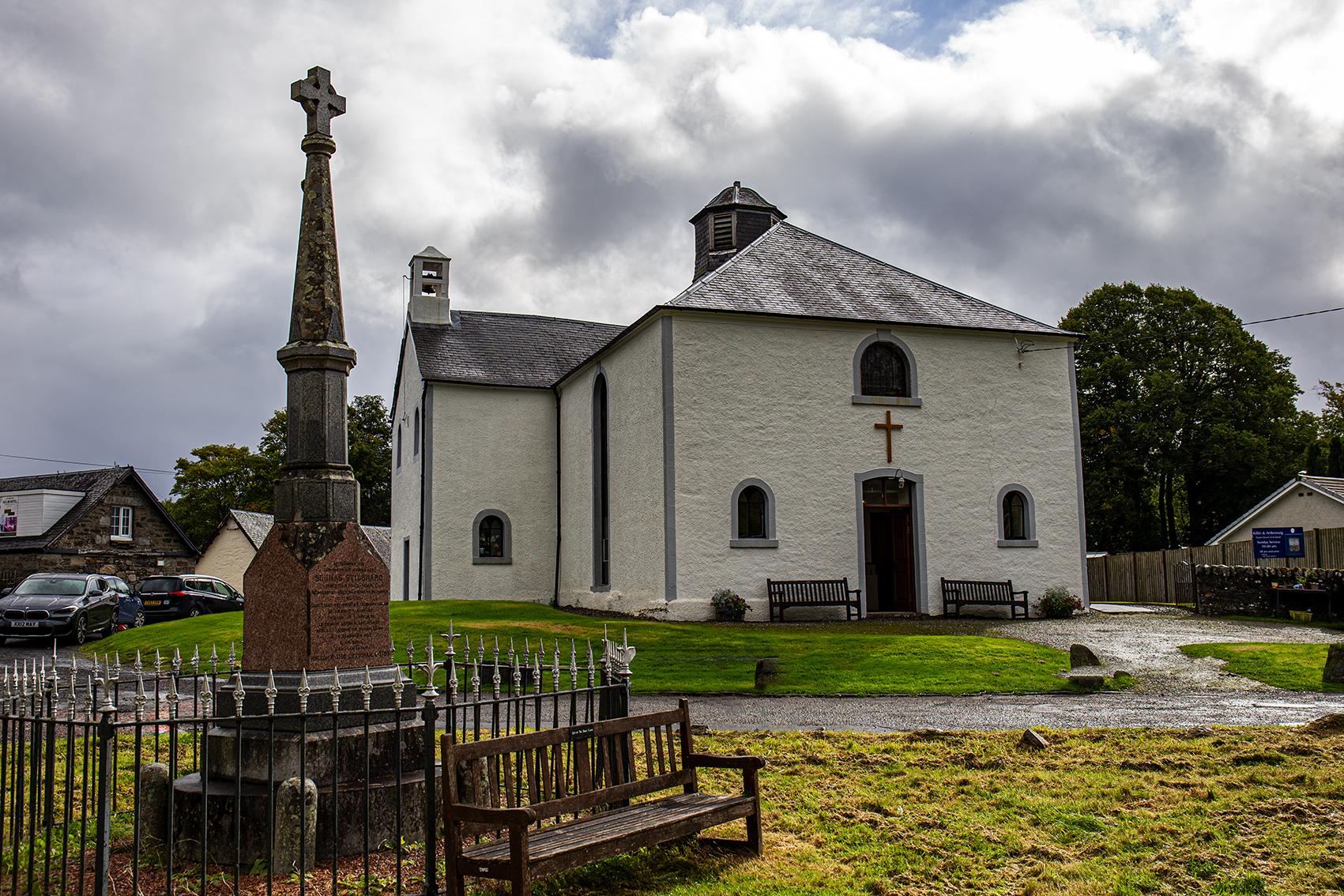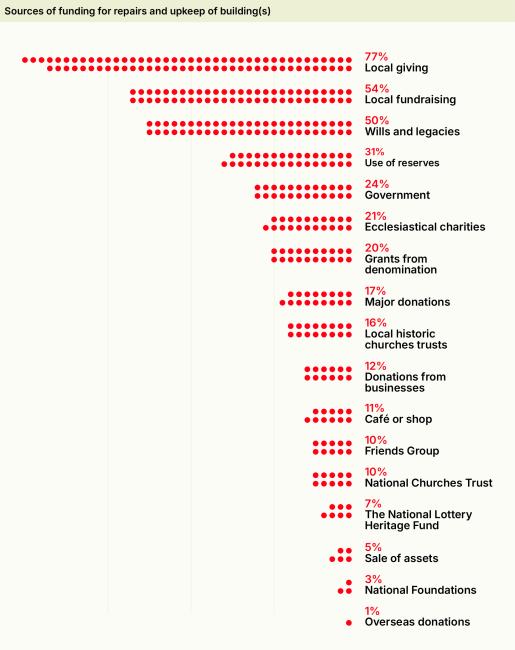
Costs associated: investing together for the future
Churches are not neglectful of their duty of care but are going above and beyond. They are remarkable in their determination to sustain their buildings – but the financial challenge is enormous. Over the last three years, the National Churches Survey shows that 65% of churches have met between 75 to 100% of their annual repair costs all from their own funds. This shows communities are not waiting for someone else to step in but working tirelessly to preserve their buildings. Yet rural and listed churches, already managing small congregations and high repair needs, are less able to meet the full cost of major works without external assistance.
Funding sources – burden of resilience
This Survey shows that although churches are having to become more active and creative in drawing on a wide range of funding streams, the reliance on local people has deepened over the last 15 years. Local giving (from congregants and visitors) has risen sharply, from 54% in 2010 to 77% of churches in 2025 reporting they rely on these donations. Alongside this, legacies have risen as a funding source from 34% in 2010 to 50% in 2025, whereas local fundraising (from concerts and events to jumble sales) has remained a steady income source over the years at around 50%. 31% of churches are relying on their reserves. Even denominational support has more than doubled, from only 9% in 2010 up to 20% in 2025, showing that church institutions are becoming more aware of systematic support required.
Both the 2010 and 2025 Surveys underline that churches are not passive, nor neglectful. These are remarkable figures that speak to the strength of local attachment to church buildings. They also highlight the risk that if these buildings are lost, it is not because local people failed to see their value, but because they could not sustain church buildings alone and need external support. In fact, the National Churches Survey shows churches doing more than ever – fundraising, applying for grants, using reserves, and seeking business donations. The consistent deterioration in building condition is not because of a lack of local effort, but rather because financial challenges are overtaking the wider availability of support.


The resilience of church buildings should not be mistaken for abundance. It is a reflection of the extraordinary effort local people devote to giving, fundraising and volunteering their time. In many cases, this spirit of stewardship has kept churches open against the odds. But as buildings age and costs rise the question is not whether churches care for their buildings – they clearly do – but how long they can realistically continue to carry the weight alone.

Applying for a grant from a church’s perspective
By Dr Phil Simpson, Session Clerk, Killin & Ardeonaig Parish Church, Perthshire
Our church building, the only church for many miles, has to be kept open and maintained to modern day standards. Conservation, standard repairs and improvements to the building are essential and depend on a huge amount of work that may or may not bring in a grant. The time to do this is squeezed from the volunteers who are already carrying the larger part of service delivery; it is they who are closer
to the vision of the church being a beacon in the community.
The next part of our fundraising programme is to raise £250,000 to restore our windows. To achieve this will take many hours of identifying and applying to a lot of grantmaking charitable trusts – and not always successfully. Volunteers giving their own time and money are the backbone of our church and seeking grants is essential: the sums involved are otherwise too big for a small though
vibrant congregation.
In the meantime, volunteers’ routine
service is left with things postponed.
We often think that if the fundraising
effort could be channelled into the
core purposes of what we do the
impact would be huge.
Continue reading
The next section is 'Church buildings and the challenges of climate change.'
